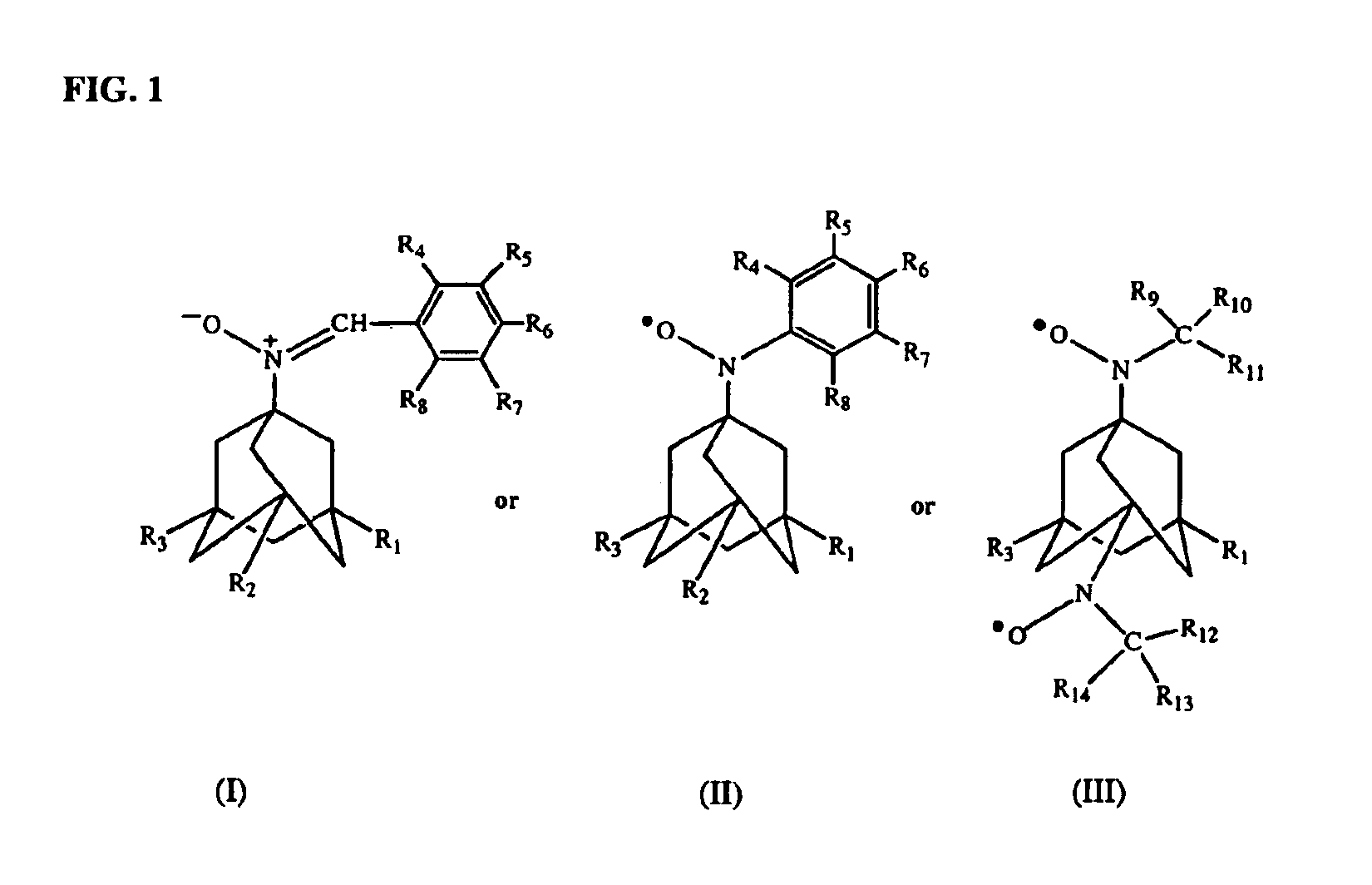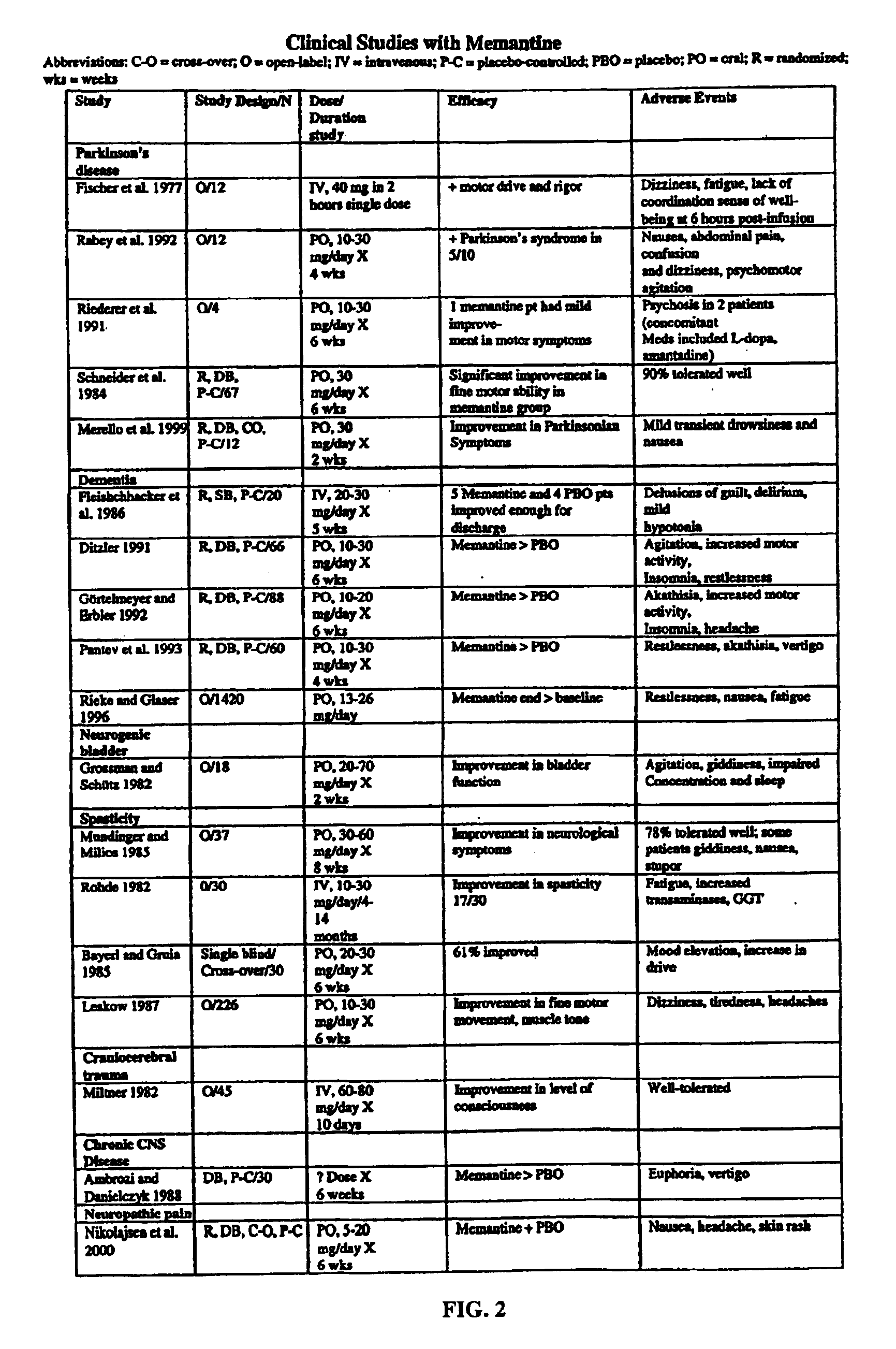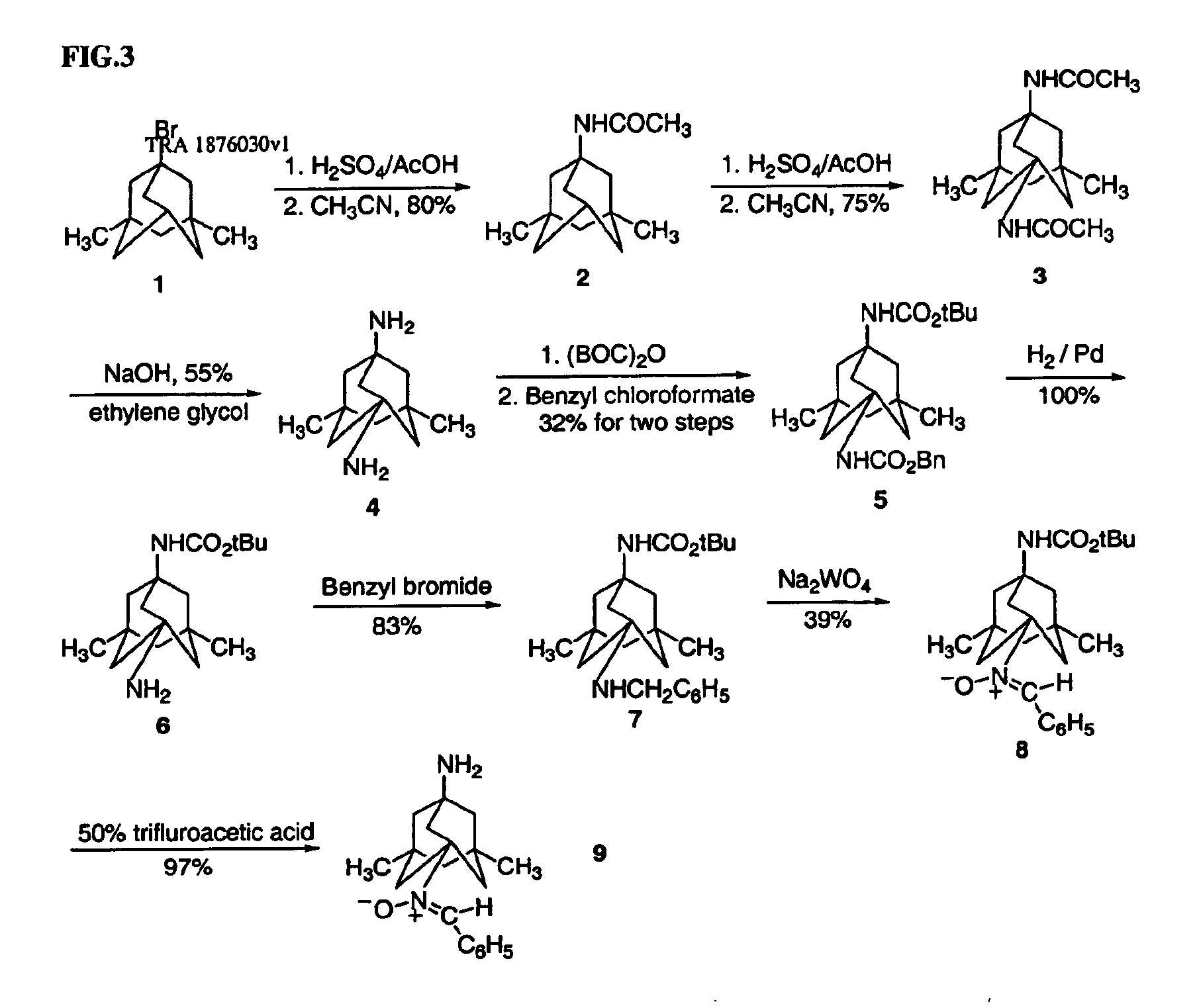Antioxidant nitroxides and nitrones as therapeutic agents
a technology of nitroxides and nitrones, applied in the direction of antinoxious agents, drug compositions, biocides, etc., can solve the problems of reactive oxygen species so dangerous, cellular and tissue damage, variety of diseases and even death, etc., and achieve the effect of treating and/or preventing age-related disorders
- Summary
- Abstract
- Description
- Claims
- Application Information
AI Technical Summary
Benefits of technology
Problems solved by technology
Method used
Image
Examples
example 1
Synthesis of 1,7-diacetamido-3,5-dimethyladamantane (3)
1-Acetamido-3,5-dimethyladamantane (2) (10 g) was added slowly to concentrated sulfuric acid (120 mL) cooled to 0° C. in a salt-ice bath. The solution was stirred at 0° C. for 1 h. Acetonitrile (23 mL) was then added dropwise. The reaction mixture was stirred at 0° C. for 2 h, and then at room temperature for 1 h. The reaction mixture was poured into ice-water. Saturated sodium hydroxide solution was added with cooling. The precipitate (dark solid) was filtered, and discarded. The off-white solid was collected by filtration. Recrystallization afforded 3 as a white solid (6.3 g).
example 2
Synthesis of 1,7-diamino-3,5-dimethyladamantane (4)
Diamide 3 (1.56 g) was added to diethyene glycol (25 mL). The reaction mixture was stirred at 175˜180° C. for 16 h. The brown solution was cooled to room temperature, and water was added (100 mL). The reaction mixture was extracted with a solvent consisting of ethyl acetate (80%) and t-butylmethyl ether (20%) (70 mL×7). The combined organic solvent was washed with water and brine, and dried over sodium sulfate. The solution was concentrated to approximately 20 mL. Anhydrous hydrogen chloride in ethyl acetate was added. The precipitate was filtered. The product was then dissolved in water (10 mL). The product was extracted with ethyl acetate (10 mL×6). Solvent was removed to afford diamine 4 as an off-white solid (767 mg).
example 3
Synthesis of 1-tert-butoxycarbonylamino-7-benzyloxycarbonylamino-3,5-dimethyladamantane (6)
Di-tert-butyl-dicarbonate (23 mg) was added to diamine 4 (23 mg) dissolved in tetrahydrofuran (THF) cooled to 0° C. The reaction mixture was stirred at room temperature overnight. Benzyl chloroformate (25 mg) was added, and the reaction mixture was stirred at room temperature for 2 h. THF was removed. The residue was dissolved in ethyl acetate, and washed with water. The solution was dried over sodium sulfate, and solvent was removed. The product was purified by thin layer chromatography, eluting with a mixture of ethyl acetate and hexane (1 / 3, v / v) to afford 6 as a white solid (20 mg).
PUM
 Login to View More
Login to View More Abstract
Description
Claims
Application Information
 Login to View More
Login to View More - R&D
- Intellectual Property
- Life Sciences
- Materials
- Tech Scout
- Unparalleled Data Quality
- Higher Quality Content
- 60% Fewer Hallucinations
Browse by: Latest US Patents, China's latest patents, Technical Efficacy Thesaurus, Application Domain, Technology Topic, Popular Technical Reports.
© 2025 PatSnap. All rights reserved.Legal|Privacy policy|Modern Slavery Act Transparency Statement|Sitemap|About US| Contact US: help@patsnap.com



